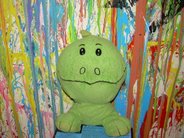
Journal 3:
Autism has become one of the greatest mysteries of modern science, with thousands of experts all over the world working to find answers. Since it was first described as its own disorder in 1943 by Dr. Leo Kanner,
 cases of autism have continued to rise around the world. The severity of the disorder fluctuates in each case from low to high function cases as described by Hans Asperger who is known for his work with high functioning autistic individuals. The disorder is described in the Diagnostic and Statistical Manual of Mental Disorders (DSM-IV) as being associated with a lack of interest in social situations, poor or no development of communication skills, repetitive behaviors, and impairment in role playing and imaginary play. Due to the areas of impairment and the similarities to brain damage patients, a neurological answer has been sought for many years.
cases of autism have continued to rise around the world. The severity of the disorder fluctuates in each case from low to high function cases as described by Hans Asperger who is known for his work with high functioning autistic individuals. The disorder is described in the Diagnostic and Statistical Manual of Mental Disorders (DSM-IV) as being associated with a lack of interest in social situations, poor or no development of communication skills, repetitive behaviors, and impairment in role playing and imaginary play. Due to the areas of impairment and the similarities to brain damage patients, a neurological answer has been sought for many years. Giacomo Rizzolatti,
 a neuroscientist at the University of Parma, and his colleagues were the first researchers in the field to discover the existence of mirror neurons in macaque monkeys in the 1980’s. This discovery held many questions for the researchers and they continued to delve into the subject, conducting experiments involving a macaque monkey performing tasks, such as grabbing a peanut, and then watching researchers perform the same tasks. These experiments turned up consecutive evidence that the monkey’s mirror neurons fired in both incidences. The findings were published for the first times in Experimental Brain Research (Vol. 91, No. 1). Shortly after reporting their findings the researchers took the next step to test for mirror neurons in humans. The study turned up the same findings. This was the breakthrough that has lead to many more experiments in this field.
a neuroscientist at the University of Parma, and his colleagues were the first researchers in the field to discover the existence of mirror neurons in macaque monkeys in the 1980’s. This discovery held many questions for the researchers and they continued to delve into the subject, conducting experiments involving a macaque monkey performing tasks, such as grabbing a peanut, and then watching researchers perform the same tasks. These experiments turned up consecutive evidence that the monkey’s mirror neurons fired in both incidences. The findings were published for the first times in Experimental Brain Research (Vol. 91, No. 1). Shortly after reporting their findings the researchers took the next step to test for mirror neurons in humans. The study turned up the same findings. This was the breakthrough that has lead to many more experiments in this field. A recent study was conducted by Lindsay Oberman and Vilayanur Ramachandran,
 yielding new information that could lead to another breakthrough. Dr. Ramachadran of the Center for Brain and Cognition at the University of California, San Diego is one of the leading figures studying the link between mirror neurons and autism. Dr. Ramachadran has written over 120 papers for a wide variety of medical and scientific journals. His work has
yielding new information that could lead to another breakthrough. Dr. Ramachadran of the Center for Brain and Cognition at the University of California, San Diego is one of the leading figures studying the link between mirror neurons and autism. Dr. Ramachadran has written over 120 papers for a wide variety of medical and scientific journals. His work has been translated into eight languages and he is known around the world. Ramachadran has been featured in many news and television programs (including the videos I have featured on this blog) and has received a long list of degrees, honors and awards. He has written a number of papers with Lindsay Oberman, another researcher and student at the Center for Brain and Cognition at the University of California. I plan to e-mail Lindsay to try to set up an interview with her through e-mail or phone due to the lack of information on the internet about her education and involvement in the studies she has conducted.
been translated into eight languages and he is known around the world. Ramachadran has been featured in many news and television programs (including the videos I have featured on this blog) and has received a long list of degrees, honors and awards. He has written a number of papers with Lindsay Oberman, another researcher and student at the Center for Brain and Cognition at the University of California. I plan to e-mail Lindsay to try to set up an interview with her through e-mail or phone due to the lack of information on the internet about her education and involvement in the studies she has conducted.Photos: From top right: Dr. Leo Kanner taken from Autism-Home,Hans Asperger taken from The national Autistic Society’s Website ,Giacomo Rizzolatti taken from Enel , Vilayanur Ramachandran taken from his UCSD website, Lindsay Oberman taken from her UCSD website,
Works cited:
Winerman, Lea. “The mind's mirror.” Monitor On Psychology: A Publication of the American Psychological Association. Vol. 36 Oct. 2005.
http://www.apa.org/monitor/oct05/mirror.html




1 comment:
Nice post on main figures. Gives the reader an idea of who the big names in autism actually are. I really like how you alligned pictures on either side of the post. Keep up the good work!
Post a Comment